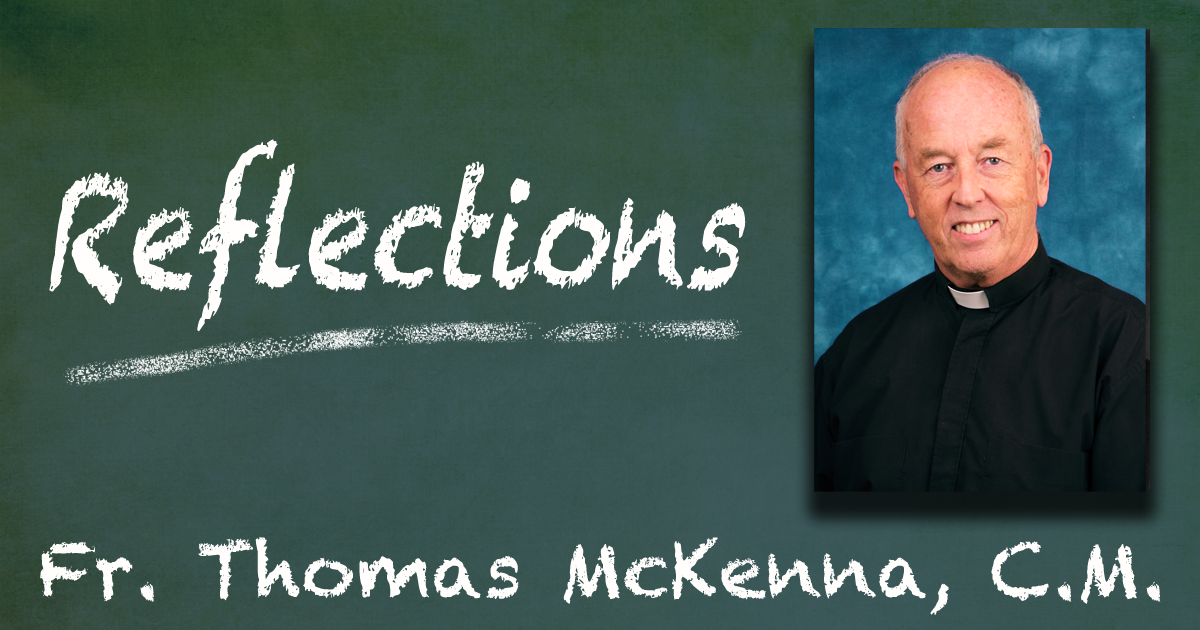
“Hazy, Clearer, That’s It.” An Emmaus Pattern of Discipleship (Lk 24:13-35)
Apologies if this opening metaphor doesn’t catch the profundity of this wonderful conversion story of the two disciples on the Emmaus road. But…
You’re in the eye doctor’s office and sitting behind one of those lens machines looking through it at the chart at the other end of the room.
– “How is that?” “Not so clear.”
– “How’s that?” “Still pretty blurry. That’s better. Go back to the first. Try another. Ah, yes, that’s it.”
It’s a movement from hazy to clear, from indistinct to sharp, in some ways from the cold of a cloud to the warmth of a sun.
Follow this progression in the Emmaus travelers:
– “What do you see?” They see ruin, disaster, awful disappointment, confusion, nothing making sense, all fallen apart, no real meaning left in life.
– “Let me help you to look at these same things, but through another lens.” The stranger rearranges the Scriptures, (up until now all in a heap, illuminating little and inspiring less) so that things begin to come together. The disciples catch his drift and a deeper pattern begins to appear. They start to see a larger backdrop to all the happenings around Jesus – and indeed in the happenings around them. Light dawns.
– “I’ll take your kind invitation and join you for a meal.” Things are getting not only brighter, but even a bit warmer.
– “Let me do something that will open your eyes (and hearts) to the meaning of your sharing in that Passover meal last week with the Master.” And in the breaking of the bread, the stranger is revealed for who He is. And the previous days and all the years before that snap into focus. It all comes clear. And then he vanishes.
– And the rest is the apostolic Church.
How about this as a description of the life of discipleship – or at least a pattern in it? A dimming, then a coming to clarity and conviction, a cycle that recurs over and over again. That is, along the way the lens goes from very blurry to slightly better, back to foggy, then to “that’s it” – and back again.
There’s an initial “waking up,” a coming to grips with the fact that this faith stuff, this Gospel life, this world of God’s presence — is real. “I have to take these things seriously.” It can happen in one powerful experience (for instance St. Louise’s Pentecost “Illumination”) or over months and years (so with St. Vincent’s gradual move from self-interested to Christ centered and other directed). And this first experience becomes a launching pad, a spot from which you set out and one to which you look back to regain your bearings.
Then there’s a blurring, when the clarity of things smudges a bit, when the sharp lines of your vision get fuzzy around the edges. And so you move through that less focused time in the hope that things will come together again. (Perhaps, this is what’s behind that old expression, “regaining that first fervor.”)
Along the way, different people help by witnessing to what they themselves have seen and heard. Some of them are “fresh out of the chair with the new prescription in hand.” Like the Emmaus disciples, their hearts are burning within them and their testimony is strengthening. Their clarity gives you warrant that your clarity will come again, and hopefully return with even more sharpness.
Different experiences and events do something of the same thing. They rearrange the Scriptures and the tradition so that different parts of them shine a clearer Gospel light on what life has put before you. Things make a new kind of sense, now inside a more encompassing horizon.
And then you go out again and talk of how your heart was burning within you. You testify to how something came back to life, how a newness came on, how things have come to fit more snugly into a bigger picture.
The point. We’re all in the optometrist chair, looking out at life through lenses that switch from blurry to clearer. The prisms keep shifting. We try to remember what the sharper sight was like. We trust that some new window will come along and make things distinct again. We are encouraged by others’ reports.
Likewise, we’re all on the Emmaus road, sometimes at the beginning of the conversation with the annoying stranger wondering how he could be so dense, sometimes a little later at the “Aha” moment of that’s how it fits together, other times at the fellowship table when our hearts start to warm, and still others toward the end of the meal when in some breaking-of-the-bread action, that fiery realization sets in. Emmaus sets out a faith-pattern we can all recognize, going from darkness and cloudiness through gradual clearing and then to sharp shadows – and back again.







This is a great reflection, thanks!